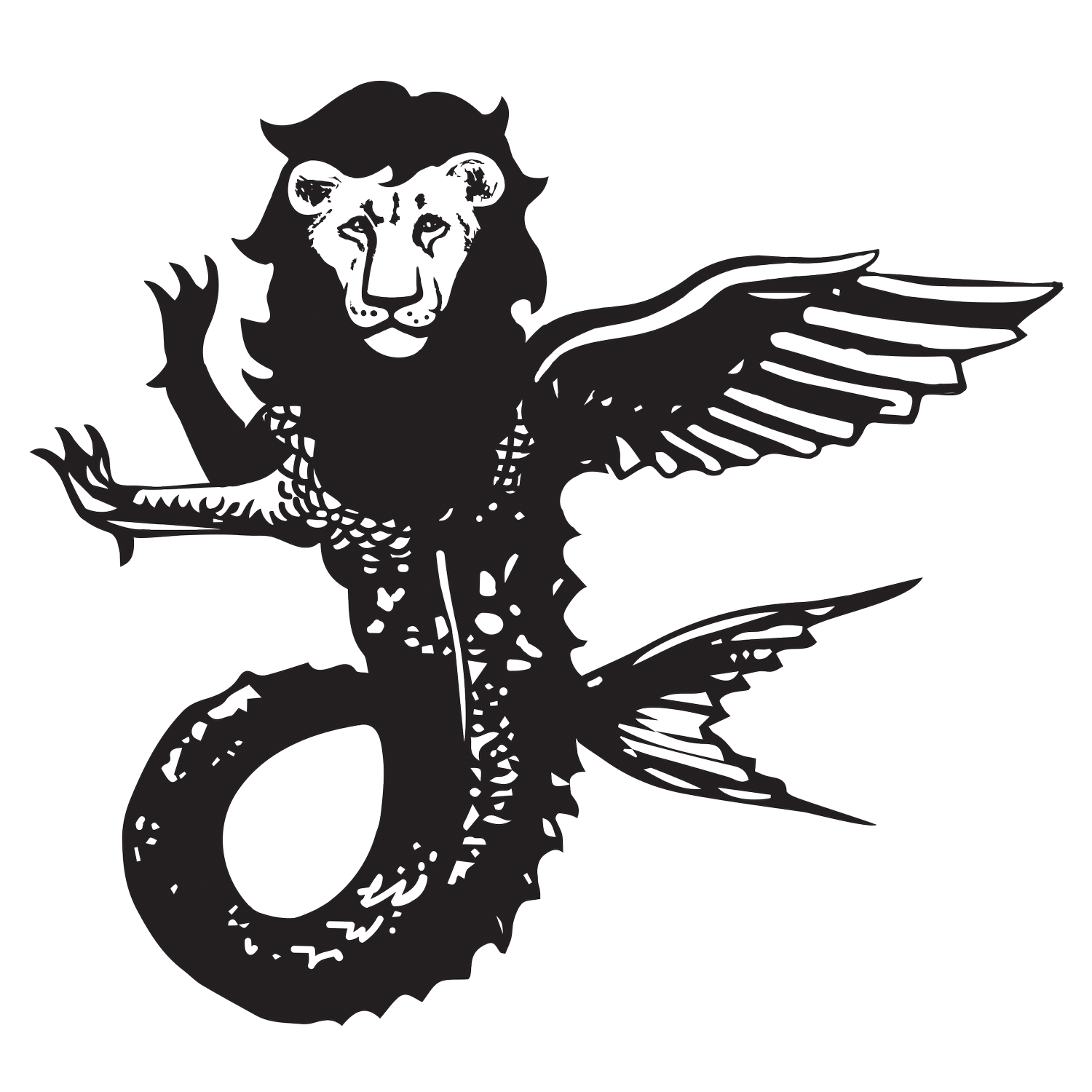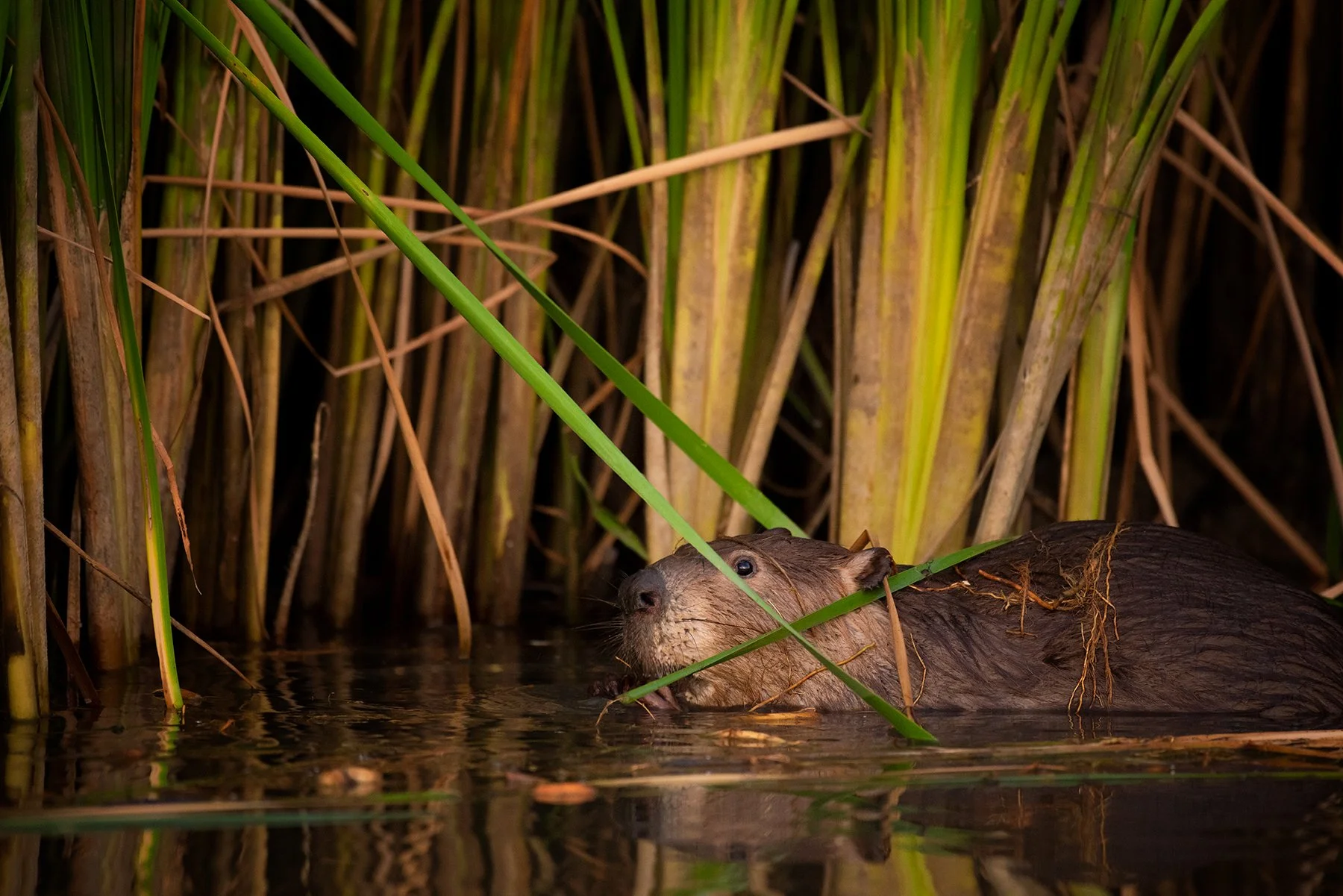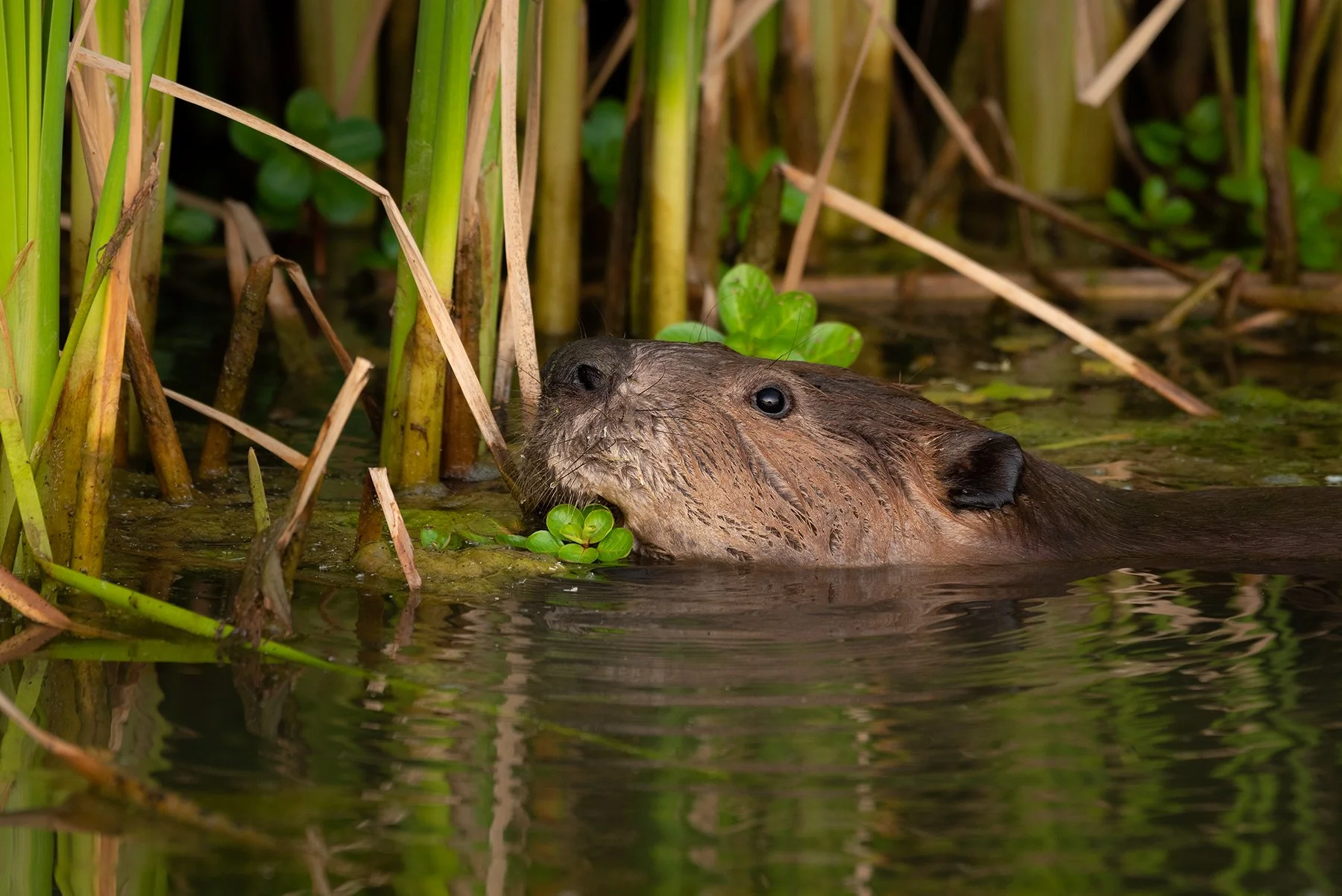Searching For The American Beaver
The American beaver, a creature of extraordinary ability and one by which I have been captivated by for many years. Maybe it is the beaver’s architectural ingenuity and ability to construct complex dams and lodges, maybe it’s this intelligent creature’s animated nature, or maybe it’s the fact that for the longest time, these shy creatures remained an enigma to me, teasing me with clues of their presence but nothing more. Such is my story with this American legend, a story of intrigue, excitement, surrender and then finally… luck. This eternal tale has manifested itself in many ways, and in its most current chapter it has allowed me to spend time in the company of a family of beavers, observing them as they spend their days shaping the wetlands they call home.
My fascination, appreciation and insatiable quest to see these incredible creatures in their natural habitat was cultivated in the Great Trinity Forest, during my time as an Education Manager and Guide for the National Audubon Society. It was here, in this, the largest urban hardwood forest in North America, that I was first introduced to this facilitating creature, through a series of clues, tracks and ultimately dead ends. The Great Trinity Forest, aptly named after the Trinity River which gently meanders through this natural urban wonderland, is a haven and in many cases a refuge for wildlife trying to escape the urban sprawl of nearby Dallas. With that in mind, it also provides residents of the city a great avenue to escape the hustle and bustle and reconnect with nature.
I knew through the accounts of other naturalists that frequented the forest that beavers were known to reside in some of the many flood plain ponds as well as the river itself. I too had pieced together the many clues left behind by these semi-aquatic architects to come to the conclusion that they inhabited the ponds at least during certain times of the year. The thing about flood plain ponds is that they are very seasonal, flooding and rainfall dictate whether the area would have ponds or parched earth. This was a huge hurdle, because it dictated whether or not the beavers would be in the area for an extended period or in fact leave the area completely and develop an area with a more constant and permanent water source… the muddy banks of the Trinity perhaps.
Time passed and the area was suffering from a few extremely dry seasons, with the ponds constantly drying up, I believe that the beavers had moved on and were no longer residents of the immediate area. All I was left with was the odd old weathered chewed up tree and dashed hopes. I look back at this time and honestly believe that it shaped me in many ways as a naturalist and nature lover. Being a wildlife photographer in Africa, I had always been drawn to the large iconic species, but it was here that I began looking at nature on a more intimate level, I began to appreciate all the little organisms that completed the environment at large and played a vital role in its survival. It was here that I became a birder, it was here that I became awestruck with butterflies, it was here that I marveled at a creature that I had yet to see in its natural environment.
The American beaver is an incredible creature, both highly intelligent and industrious. They have been known to construct incredible structures in all types of waterways using a number of building materials. For instance, consider this, the largest beaver dam in the world stretches for about 850m and can be seen from space… that is simply unbelievable. If the sheer construction of these dams, or lodges as they are also known, is not impressive enough, then the complexity of these structures is sure to leave you with an incredible admiration for this master builder of the animal kingdom. Each of these purposefully constructed lodges have a number of chambers, allowing these incredible monogamous mammals to safely raise their young while avoiding predators. As amazing as the beaver is, it too has not been able to escape the gluttonous hands of man. Beavers once numbered about 100 million strong in North America but their numbers were devastatingly reduced to near eradication, mostly in part to the fur trade. In recent years their numbers have subsequently rebounded to about 15 million, still a far cry from the original populations that shaped the waterways of the west.
Years had passed since my time with the Audubon Society, and I traveled far and wide photographing many incredible creatures in some spectacular environments around the world. I often thought about these incredible creatures, and how they evaded me for so many years, how I was so close yet so far. I often thought back to those flood plain ponds and nature trails that I knew like the back of my hand, the trails that I walked every day, finding the same clues and nothing more… intrigue and excitement had succumbed to a feeling of defeat maybe even indifference. I frequented a number of wetlands and waterways over the years, and always keep an eye out, for even just a sign… perhaps this is what one refers to as “false hope”.
It was another blistering hot day at the Hagerman National Wildlife Refuge, a wetland oasis for migratory birds on the banks of Lake Texoma. A place I have become rather fond of visiting, as it offers one the opportunity to view a diverse range of both migratory and resident bird species. This particular day had not yielded many photographic opportunities, I believe this was in part due to the searing temperature. After spending a number of hours exploring some of the drives and trails, I decided to call it quits and head home, “tomorrow is another day” as they say. As I headed toward the gates of the refuge I spotted a great egret fishing on the muddy banks of a small wetland area, the green reed backdrop contrasted beautifully against the egrets pure white feathers and I decided to set up for a few more shots… as a wildlife photographer there is no such thing as a definite final shot. I set up my gear on a small bridge between the shallows of the wetland and the lake itself. As I photographed the egret in some incredible golden light, I noticed a disturbance in the glasslike water, a “V” shaped ripple. I knew instantly that it was something large, and that it was swimming towards me… Oh MY GOODNESS!
After all of this time… there it was, The American beaver. The beaver swam right by me without even noticing me sitting on the banks, and began to feed on some of the juicy reeds on the opposite bank. I managed to get a few shots before I lost the last light in the sky… Even after it had become too dark to photograph, I just sat there watching this beautiful creature in its natural habitat. It was a moment that I had waited for for a very long time, but a moment for which I was not prepared or expecting, mother nature plays tricks like that sometimes… its what draws me to the natural world. Even though my first encounter with this beaver was short lived, I now knew where one was located and I planned to return at the very next opportunity I had.
I have subsequently returned to this area a number of times, and had the pleasure of enjoying the company of this industrious creature spending his time unperturbed, wild and free. As I began visiting the area more often, the beaver became more accustomed to my presence, which in turn allowed me to get some very intimate images of this highly intelligent animal spending its time foraging in its wetland home.
I have spent a number of days on this little bridge that overlooked this beaver’s home, some days have been more rewarding than others. It was however my most recent encounter that was truly special. As I sat and watched the beaver enjoy its evening meal, I noticed some movement on the water, just near the point… it was the same movement that caught my eye the very first time I had seen the beaver. Before I knew it, I was in the company of not one but FIVE beavers. The moment was surreal, and incredibly rewarding to say the least. As I sat there, watching these masterful swimmers, playfully call an end to their day, I couldn’t help but think of that old chewed up, weathered tree stump in the Great Trinity Forest. It made me smile, this was a happy moment.
This encounter, the time spent in the company of this family of beavers (I am not yet sure of the family dynamics between the individuals, or if they are even a family at all, but I will surely learn more about them as I spend more time observing them) had taught me so much about myself as a wildlife photographer and a naturalist. They had shown me that hope should always drive you, that in nature the most unexpected moments can become the sighting of a life time.
The American beaver, a creature intelligent beyond comprehension, a true legend in the animal kingdom and perhaps the hardest working being on this beautiful planet. To me though, the American beaver is a journey of a wildlife photographer coming full circle.






